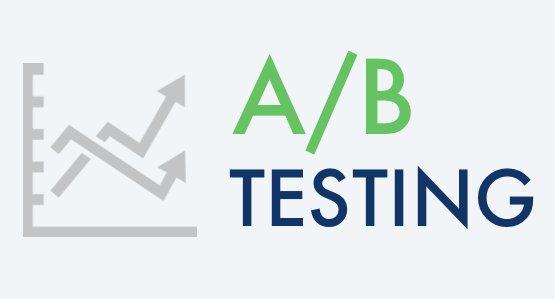- Have any questions?
- [email protected]
THE POWER OF A/B TESTING

ANCHORING – DIGITAL MARKETING
October 30, 2023
The A/B Testing Process
October 31, 2023What assumptions are you making about the performance of your company’s various campaigns? Stop and think about this for a moment.
Now, taking that question a bit further— do you really know whether each of your campaigns are formatted optimally, to drive as many conversions as possible? Or, are you just crossing your fingers and hoping for the best?
It is impossible to develop more effective campaigns and grow your customer base if you don’t know which elements of your campaigns are contributing to these efforts and which are working against them.
But there’s a way to easily figure this all out, moving away from guessing and towards confidence. The answer is A/B testing. A/B testing is the most used method for measuring conversion rates, with more than two-thirds of businesses integrating A/B testing into their marketing strategy. In fact, A/B testing and the larger umbrella of conversion rate optimization, which, generally-speaking, is the transformation of passive site visitors into active, engaged users, have become so popular and valuable that now, 42% of companies employ more than one person to handle this vast area of expertise. With A/B testing, any company can learn how to optimize their marketing campaigns, better understand their customer base, develop more relevant content, and improve return on investment (ROI).
A/B testing is an efficient and cost-effective marketing strategy that companies cannot, and should not, live without. So, with that being said, don’t waste another moment assuming, instead of knowing, your marketing campaigns are working. You could be alienating large customer groups or ignoring the potential to increase ROI for campaigns that do work, but could use improvement.
What Is A/B Testing?
A/B testing, also known as split testing, compares two versions of the same campaign on a certain channel. These channels include (but are not limited to):
- Website Social media
- Emails Mobile apps
- Landing pages
- Digital advertisements
Individual campaigns on these channels could include:
- The homepage of a website
- A notification on a smartphone of a new product offer
- The initial email a new customer receives after signing up for a service
But how much do the two versions differ? It all comes down to one element, whether that’s the size of a clickable button, the wording of a call-to-action, the fonts used, or another element concerning design, formatting, or language.
For example, you could set up a test that compares a blue background versus a green background for a company’s homepage. The page has had a blue background for years, but the company has seen steady dwindling conversions and wants to know if users are enticed by a change in branding and therefore may be more receptive to a green background. Running an A/B test would measure which color has a greater effect on click-through rates, page views, and conversions, as applicable. If the blue background prompts a significantly higher number of conversions, and the green background drives customers away, the company will know which color will help them meet their business goals.
As in this example, A/B testing is about testing only one element at a time so that marketers can maintain control over the results and draw firm conclusions. From these conclusions, marketers are able to assess the effectiveness of each variable in driving conversions and from there, can make the necessary adjustments to their campaign. By making these necessary adjustments, marketers are able to continue improving their efforts in order to deliver the highest return-on-investment (ROI) possible to their organization.
Why Is A/B Testing Important?
By assessing the actions of buyers, A/B testing reveals what truly appeals to them. In doing so, it also advances consumer engagement, campaign effectiveness, and marketer expertise. Here are a few specific reasons why A/B testing should be a part of your company’s marketing strategy:
- A/B testing increases engagement with customers: The goal of A/B testing is to improve interactions between buyers and brands by uncovering which marketing methods most resonate with people. Since this type of testing applies to everything, from more engaging personalized emails to social networks, it opens up all channels to stronger communication.
- A/B testing enhances campaign effectiveness and optimizes programs for a company’s target audience: By trying out different combinations for a specific group of customers, marketers can eliminate elements that alienate users, drive people away, or have no effect on conversion rates whatsoever. In addition, all audiences do not respond identically to a single campaign.
- A/B testing enhances marketers’ awareness and expertise of audience preferences: A/B testing provides businesses with enormous amounts of data on audience behavior. The more tests marketers run, the more robust their understanding will be, and they can begin to make more intuitive choices in their marketing


